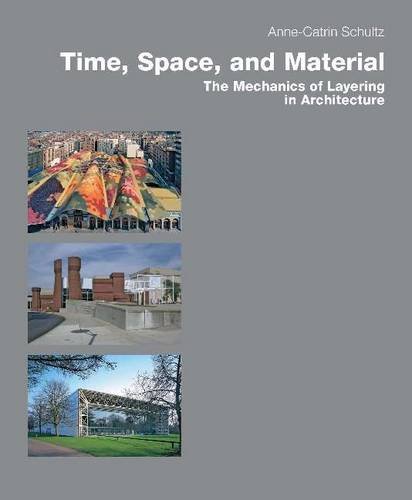| Book Review of Time, Space, and Material: The Mechanics of Layering in Architecture by Anne-Catrin Schultz Dr. Christina Lanzl In her new monograph, Time, Space, and Material: The Mechanics of Layering in Architecture (Edition Axel Menges, 2015) Anne-Catrin Schultz deepens her inquiry into spatial layering of the built environment. Schultz delved into the subject with the publication, Carlo Scarpa–Layers (Edition Axel Menges, 2007), an examination of the 20th century Italian architect, whose vocabulary and inventiveness is closely related to traditional craft and the knowledge of materiality. Scarpa’s design thoughtfully integrates historic structures with contemporary materials. Time, Space, and Material covers the concept of layering in architecture, its mechanics, a wide array of uses and narrative in architecture and urban design in an overview survey. The book offers an insightful, scholarly view of layering, an important topic because “cities and buildings are continuously exposed to additions and subtractions according to changes in social structures, use patters, technology, transportation, and economy (p. 7). “ |
• Temporal layering: sedimentation, additive or subtractive process over time;
• Spatial Layering: simultaneous perception of spaces; and
• Material Layering: additive configuration of planes.
More recently, Schultz has expanded her scientific scope to include cultural placemaking, thus adding the dynamics of the immaterial, i.e. human memory and narrative, which inform the meaning of place.
Laid out are layering processes in geology, archaeology, engineering, graphic design and the visual arts. The key to Schultz’s approach is an examination of sections beyond a structural or stylistic understanding, ultimately aimed at dissecting, analyzing, and folding a period, a city, or a structure into a system of data. In the literature the ‘monolith’ dominates up to the 18th century. A layered approach enters the conversation beginning in the 19th century.
A thoughtful connection is made to visual artists intense experimentation with layering starting with modernism. Prominent examples showcased are early 20th century Cubism, developed by George Braque (and Pablo Picasso, though not mentioned) with collages of single objects that are defined through simultaneous, coexisting planar layers. In the 1960s and 1970s, Robert Smithson’s minimalist geometric forms introduce repetitive layering and serialization in this minimalist vocabulary, further developed by Gordon Matta Clark in his ‘building cuts’. The link to contemporary art is established by the large-scale installations of Japanese artist Nabuko Nakanishi, comprised of hundreds of successive images in his Layer Drawings. Also mentioned might be the infinite mirrored assemblages of Josiah McElheny.
The phenomenon of layering in architecture is painted in broad strokes beginning with a review of Vitruvius, followed by insights on the temporal layering of important historic buildings through the centuries with their evolving architectural styles. A subchapter is dedicated to the important discovery of polychromy and its connection to textile design in Greek temples beginning around 1800.
Outstanding recent, featured examples of layering include the Santa Catarina Market in Barcelona and the transformation of this former convent to a covered market by architects Enric Miralles and Benedetta Tagliabue who collaborated with artist Toni Comella on a dramatic colorful roof mosaic.
A comparison of fifteen case studies in contemporary architecture that measure both the effective depth and the chronology of layering in building envelopes reveals surprising insights. The exteriors of notable designs by Foster + Partners, Morphosis, Sauerbruch Hutton and Peter Zumthor range in depth from over four up to eight feet. Others, such as Duiker, SANAA and SOM, designed walls of less than one foot in depth. Interestingly, it is revealed, intense layering clearly is a preferred architectural practice rather than an evolving trend.

 RSS Feed
RSS Feed